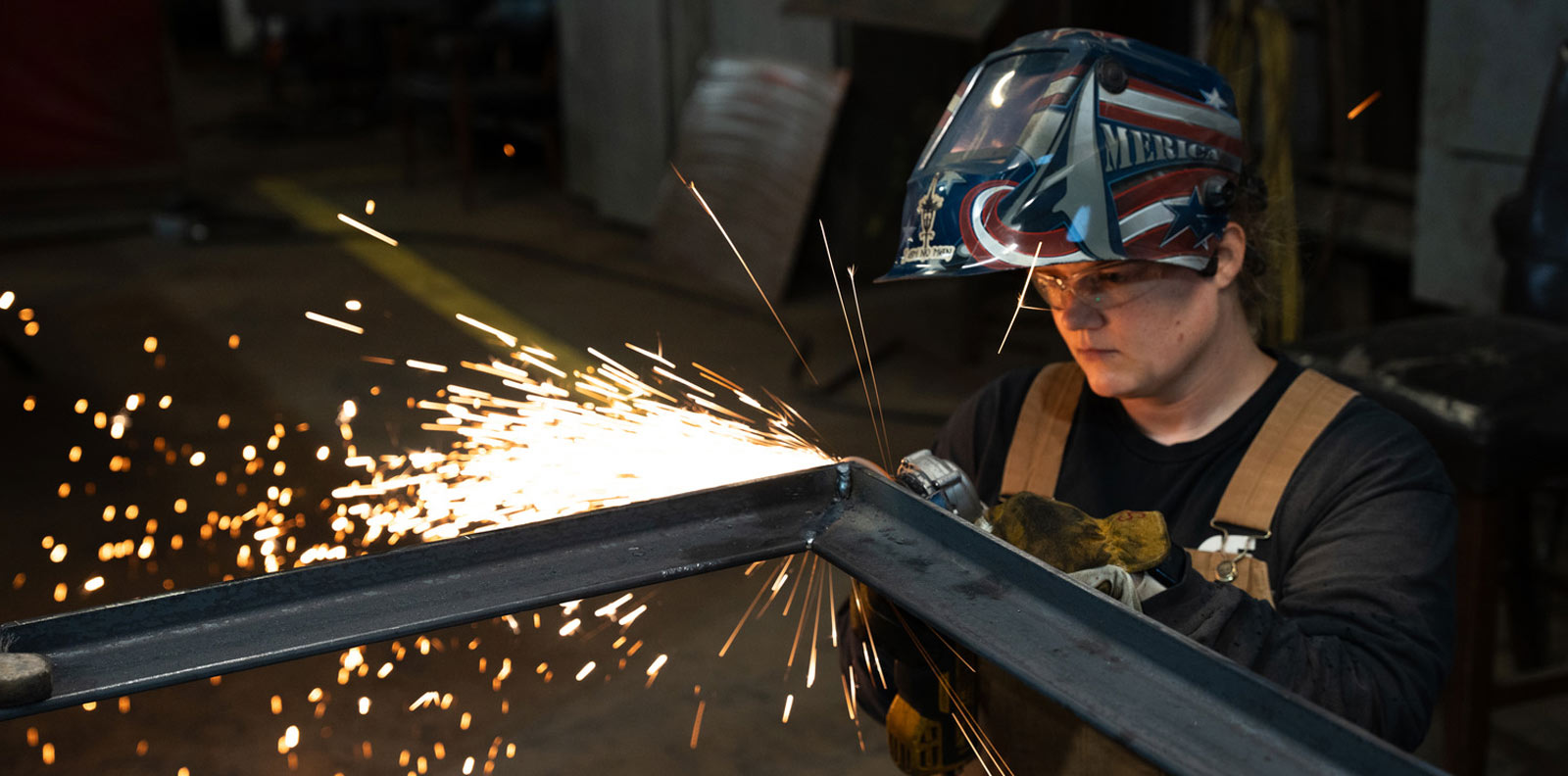RSI is a Great Training Option for Everyone
Learn more about how we can prepare you to advance your career.
Welding has so many different applications. Construction, manufacturing, and even space exploration all rely on the strong metal joints welding produces.
One reason welding has so many applications is that there are over 100 different types of welding processes.[1] By far the most common process, though, is arc welding.
In fact, if you learn to arc weld, you’ll likely be able to find work in a wide range of industries.
Arc Welding Defined
There’s more than one way to join metals: pressing, hammering, rolling and heating.[2]
Arc welding uses intense heat to melt two or more metals. When they cool and solidify, a strong bond is created.
Get Started on the Path to a New Career
Fill out our form to learn how we can help you change your life.
The final product can have the same physical and mechanical properties as the individual metals used to create it.
Anatomy of an Arc Weld
- Power Source: Either a DC or AC source of power provides the electrical currents used to heat the metals in arc welding. The current is conveyed with a cable to an electrode holder and then through the electrode.
- Electrode: In arc welding, the electrode is either a metal rod or wire. It can be consumable, meaning it melts and becomes part of the weld. Non-consumable electrodes don’t melt and can be used multiple times.
- Electric Arc: An electric arc forms when the energized electrode tip touches the workpiece and then is taken away. At a temperature of 6500° F, the electric arc melts the base metal. Depending on the type of arc welding, the arc also melts the electrode or a filler metal that is added to the weld pool.
- Shielding Substance: In many types of arc welding, a slag, gas or vapor is employed to protect the arc and molten weld pool from atmospheric contamination. This technique is known as “arc shielding.”[3]
All these parts work together to fuse metals in any array of industries across the country.
Types of Arc Welding
More than half of American goods are manufactured with welding, many of them with arc welding.[4]
And not only do numerous welding processes exist, but several types of those processes also exist, arc welding included. The electrode is what really sets them apart.
- Gas Metal Arc Welding (GMAW): A semiautomatic or fully automatic process, gas metal arc welding uses a wire electrode. The wire electrode and a shielding gas are shot through a welding gun, and the wire melts into the weld pool.
- Shielded Metal Arc Welding (SMAW): This type of arc welding, commonly referred to as stick welding, uses a consumable electrode that is coated in flux. As the electrode melts into the weld pool, the flux turns into a shielding gas that protects the workpiece.
- Gas Tungsten Arc Welding (GTAW): Also known as TIG welding, this process relies on a non-consumable tungsten electrode to carry the electric current to the workpiece. A thin metal wire is manually fed into the weld pool to serve as a filler metal. A shielding gas is also employed.
These are three of the most popular types of arc welding, but there are more: flux-cored arc welding (FCAW), plasma arc welding (PAW) and submerged arc welding (SAW).[5]
Arc Welding Uses
Where could an arc welding skillset take you? Check out some of the common uses of these popular arc welding processes:
- GMAW: Sometimes called MIG welding, this process has many uses in manufacturing because it can be easily automated. Your car is probably one product of MIG welding.
- SMAW: Next time you take a cruise, think of stick welding. Shipbuilding is a major stick welding application.
- GTAW: TIG welding requires more sophisticated skills, but the extra time and effort learning the process can pay off. TIG welders can even work in NASCAR.
Learn to Arc Weld
If you’re interested in becoming a welder in Phoenix, learning to arc weld is an important first step. SMAW, MIG and TIG welding skills can help make you a good candidate for a host of welding jobs in different industries: structural welding, pipe welding and aircraft welding—to name a few.
The good news is you can learn all of these arc welding processes and more in a welding training program in Phoenix. Discover more about our Welding Specialist program.
Additional Sources
[1] https://www.bls.gov/ooh/production/welders-cutters-solderers-and-brazers.htm#tab-2
[2] Title: Welding Principles and Applications; Author: Larry Jeffus; Delmar Cengage Learning; Seventh Edition; Textbook page 8
[3] https://www.lincolnelectric.com/en-us/support/process-and-theory/pages/arc-welding-detail.aspx
[4] http://www.careersinwelding.com/welding_fun_facts.php
[5] https://www.bakersgas.com/weldmyworld/2011/05/05/different-types-arc-welding/
This blog has been labeled as archived as it may no longer contain the most up-to-date data. For a list of all current blog posts, please visit our blog homepage at https://www.rsi.edu/blog/




